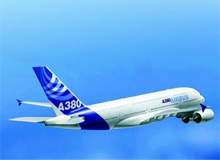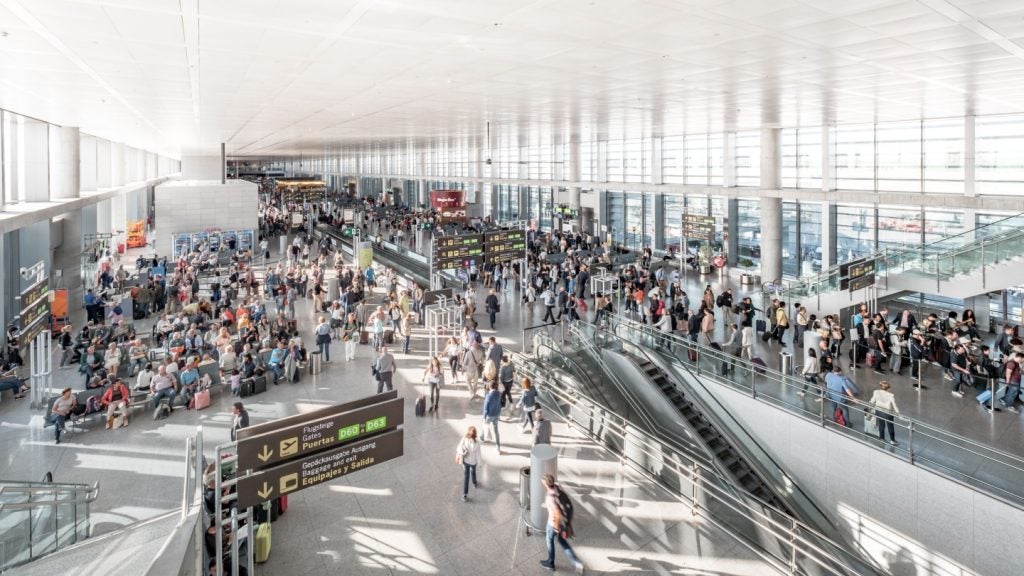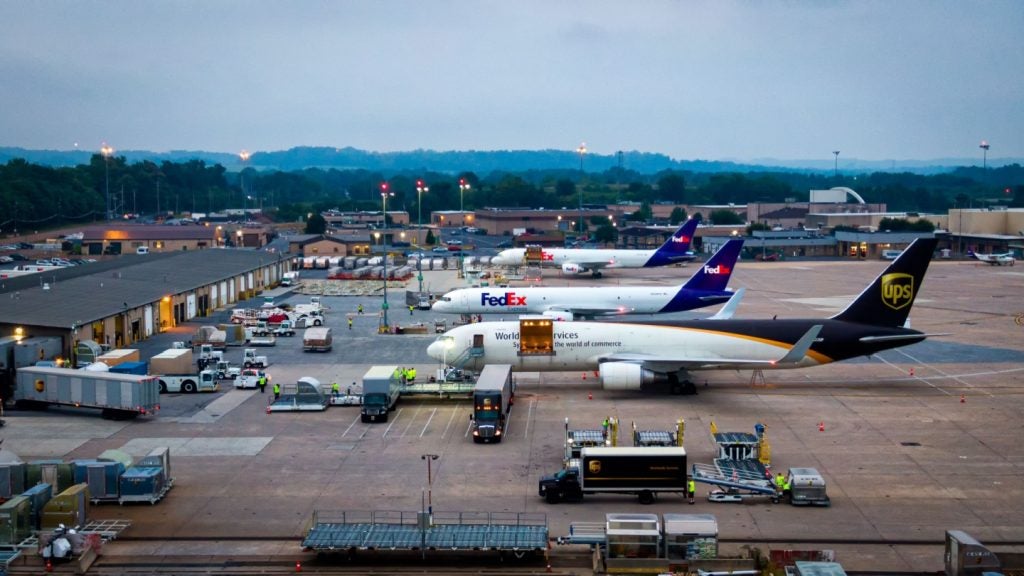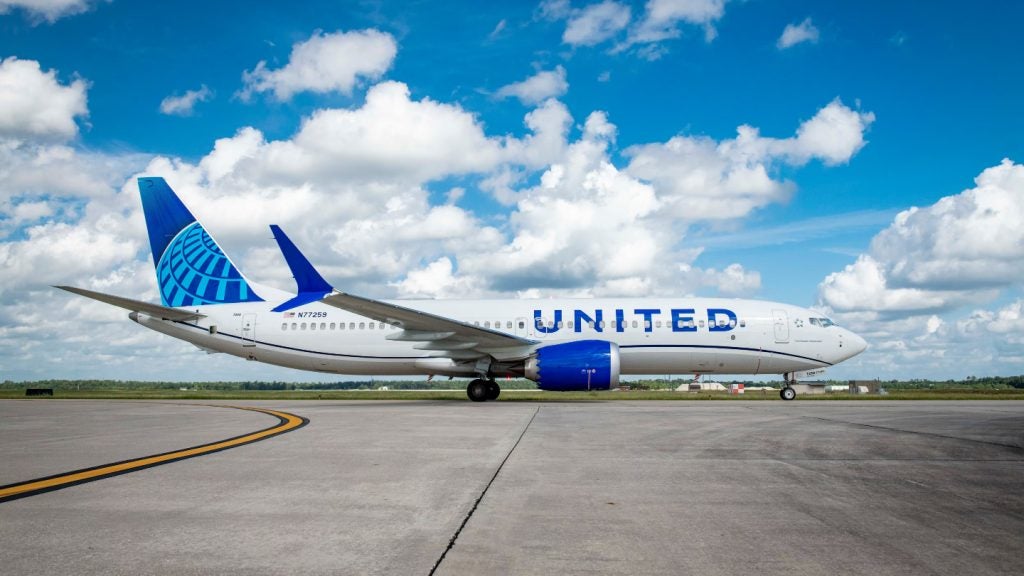
More than 60 airports worldwide are preparing for A380 commercial operations, which begin in less than six months. With its extra capacity and its unparalleled environmental characteristics (it will generate half the noise energy of existing large aircraft), airports recognise that the A380 represents the most socially responsible solution to air traffic growth.
The A380 has been designed from the start with existing and future airport infrastructure in mind. The required level of airport airside infrastructure (taxiway and runway widths and separations, for example) can be specified in two different ways.
GENERIC AIRPORT DESIGN STANDARDS AND RECOMMENDATIONS
These are the standards required to handle aircraft grouped by their wingspan and main landing gear width into generic categories. Each group has a corresponding infrastructure requirement that needs to be considered in the design and construction of a new airport or a new part of an existing airport.
At ICAO level, guidance can be found in Annex 14, where the groups are defined by code letters A to F. Individual states publish their own recommendations, usually based on Annex 14. One example is the US Federal Aviation Agency Advisory Circular (FAA AC) 150/5300, which classes aircraft in Groups I to VI. The A380 falls into the ICAO Code F and FAA Group VI categories.
See Also:
It is important to note, though, that the infrastructure dimensions corresponding to each group are based on the maximum aircraft dimensions within it.
How well do you really know your competitors?
Access the most comprehensive Company Profiles on the market, powered by GlobalData. Save hours of research. Gain competitive edge.

Thank you!
Your download email will arrive shortly
Not ready to buy yet? Download a free sample
We are confident about the unique quality of our Company Profiles. However, we want you to make the most beneficial decision for your business, so we offer a free sample that you can download by submitting the below form
By GlobalDataThis can mean that the infrastructure recommended for a certain generic group may be in excess of what is required to safely accommodate a specific aircraft (as is the case for the A380).
AIRCRAFT-SPECIFIC OPERATIONAL RECOMMENDATIONS
These requirements allow airport infrastructure to be tailored to a specific type of aircraft based on its exact characteristics. They can cater for situations where a so-called new large aircraft (NLA) needs to operate to an existing airport that is not designed to the corresponding generic design recommendations.
This process is recognised by ICAO and the FAA, who both allow a specific aircraft to be evaluated and corresponding tailored infrastructure to be developed provided the application is supported by an ‘aeronautical study’ to ensure that the desired level of safety is achieved. This system of approval has been used for many years.
For example, over 80% of B747 operations in the USA are from airports which do not meet the full US generic design standard for the type known as Group V, and have, therefore, been granted waivers under this process. A similar situation exists at several other large international airports that do not meet the full ICAO Code E generic design standards.
A380 COMPATIBILITY
Since the mid 1990s and the days of the A3XX, Airbus has actively sought and acted upon the comments of regulatory authorities, airport operators and airlines in the design process for the A380. These inputs have massively optimised the aircraft with respect to airport compatibility.
Taking into account the specific characteristics of the A380, a pan-European group of civil aviation authorities and airport operators, known as the A380 Airport Compatibility Group (AACG), has developed a set of specific operational recommendations to permit A380 operations at existing airports with a minimum of infrastructure change.
A major European airport has found that by following these recommendations it can reduce the projected upgrading costs to full Code F generic design standards by 70% and that, in total, preparing for the A380 would only represent 1.4% of the investment planned for their proposed new runway and terminal. These figures are typical of other airports worldwide.
Airbus has also actively supported ICAO, which published (in June 2004) Circular 305 entitled ‘Operation of NLA at Existing Aerodromes’. With this circular, ICAO recognises that generic aerodrome infrastructure recommendations, as defined in Annex 14, are not the sole and unique means for safely accommodating specific aircraft types at airports.
Contained within the circular are references to a number of aeronautical studies that have been, or are being, undertaken by countries such as the USA and Australia.
To assist other countries and aerodrome operators that could potentially see NLA operations in the future, all the studies are being uploaded step-by-step on the European Civil Aviation Conference (ECAC) website – www.ecac-ceac.org/nla-forum – managed by leading European Civil Aviation Authorities.
Following on from Circular 305 and in recognition of the differences between airport design and operational needs, ICAO is in the process of creating an aerodrome panel, whose main task is intended to be separating these distinct areas.
The reference for airport design will remain Annex 14, but requirements for airport operations should be covered by Procedures for Air Navigation Services (PANS). PANS are expected to build on the concepts and applicable measures already available in Circular 305.
By working closely with ICAO, national aviation authorities and airports, Airbus has optimised the design of the A380 for airport compatibility.
Most major airports around the world are preparing for A380 commercial operations using a specifically tailored solution that, in conjunction with the aircraft design, will minimise disruption and cost at airports.
SINGAPORE CHANGI AIRPORT
Singapore Changi Airport became the first airport outside Europe to welcome the Airbus A380, when the super jumbo double-decker aircraft arrived in November 2005 for airport compatibility verification tests. Changi will be the airport where the inaugural A380 commercial flight takes off in 2006.
While the A380 aircraft is in Singapore, the Civil Aviation Authority of Singapore (CAAS), which develops and manages Changi Airport, will engage in a series of tests with Airbus technical personnel to ensure that airport modifications and enhancements being developed for the A380 aircraft adequately meet its needs.
This will include appraising the new, third passenger loading bridge (PLB) or what is more commonly known as the third aerobridge, which allows passengers direct access to the upper deck of the A380.
Gate F31 is the first gate at Changi Airport’s Terminal 2 to be modified to accommodate A380 operations. The A380 aircraft will also be using Changi Airport’s runways and taxiways that have been modified to meet international safety requirements for the NLA.
When the A380 arrived at Changi Airport for compatibility tests, Wong Woon Liong, director-general of civil aviation at CAAS, said: ‘The arrival of the A380 aircraft shows that Changi Airport is ready to handle A380 flights, which we have been planning for since the late 1990s.
It also provides CAAS with an early opportunity to assess the effectiveness and efficiency of Changi Airport’s infrastructure, equipment and operating procedures.
CHANGI MODIFICATIONS
CAAS is spending S$60m on modification works to get Changi Airport’s Terminal 1 and Terminal 2 ready for A380 operations. Besides modifying gate F31, CAAS has completed the expansion of one more A380-compatible gate holdroom in Terminal 2, gate E5. This includes the installation of an additional gangway and a third PLB.
Nine other existing gate holdrooms in Terminal 1 and Terminal 2 are being similarly modified. The future Terminal 3 will have another eight A380-compatible gates, bringing the total number of A380-compatible gates at the airport to 19. Each of the 19 gates will have three PLBs.
In addition, three out of four baggage claim carousels serving A380 flights in Terminal 2 have been extended to accommodate more luggage, while two A380-ready baggage claim belts in Terminal 1 will be ready in 2006. Other modification works will include the widening of runway shoulders as well as runway-taxiway and taxiway-taxiway intersections.
Besides making modifications to existing infrastructure, CAAS has constructed two new freighter aircraft stands and two remote aircraft parking stands for A380 flights. Shields have also been installed along each side of a taxiway bridge to contain the effect of the A380 jet blast. Similar shields are being installed at another taxiway bridge at Changi Airport.
In preparation for the A380 operations at Singapore Changi Airport in 2006, CAAS has been carrying out modification work to the existing airport infrastructure as well as incorporating A380 requirements into the design and construction of Terminal 3. As the A380 aircraft is wider and heavier than the Boeing 747-400, Changi Airport’s airfield must be modified to the design requirements of the ICAO for Code F aircraft.
At Changi Airport, the existing runway length of 4000m and width of 60m meet the requirements for A380 operations. The existing separation distances between runways, taxiways and nearest obstacles also meet the international norms specified for A380 operations.
However, the existing runway shoulders have been widened by 4.5m on each side to allow the A380 aircraft to operate safely. The aircraft pavements at runway-taxiway and taxiway-taxiway intersections are being widened to allow pilots to manoeuvre the giant A380 aircraft safely at the turns.
Shields have been installed along each side of a taxiway bridge to contain the effect of the A380 jet blast. Similar shields are being installed at another taxiway bridge at Changi Airport.
To facilitate passenger movements from the terminal buildings to the aerobridges, existing fixed gangways (which link the gate holdroom to the aerobridge) are being modified at the designated gates for A380 operations.
Each of these gates will be installed with an additional fixed gangway and a third aerobridge. They will also be enlarged to serve the increased number of passengers that the A380 will carry.
Two of the existing gates, F31 and E5, in Terminal 2 are now A380-compatible. Similar works have been scheduled to modify five gates in Terminal 1 and four other gates in Terminal 2.
Terminal 3 will have eight gates that can serve A380 flight operations when the terminal opens. In all, Changi Airport will have 19 enlarged gate holdrooms to accommodate A380 flights.
To accommodate the larger volume of arrival baggage from A380 flights, the presentation frontage of existing baggage belt carousels in Terminal 1 and Terminal 2 has been extended to about 90m.
Extensions to three of the four belt carousels in Terminal 2 serving A380 flights have been completed and in Terminal 1 two belts were lengthened in early 2006. Four belts in the upcoming Terminal 3 will be custom-made to serve A380 flights. Two new A380-compatible freighter aircraft stands and two new A380-compatible remote aircraft parking stands have been constructed.







